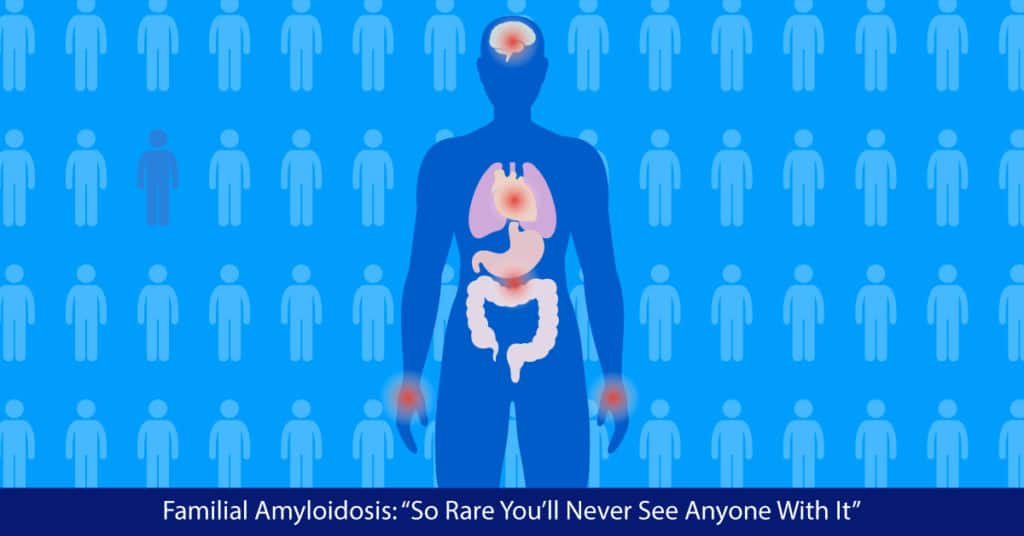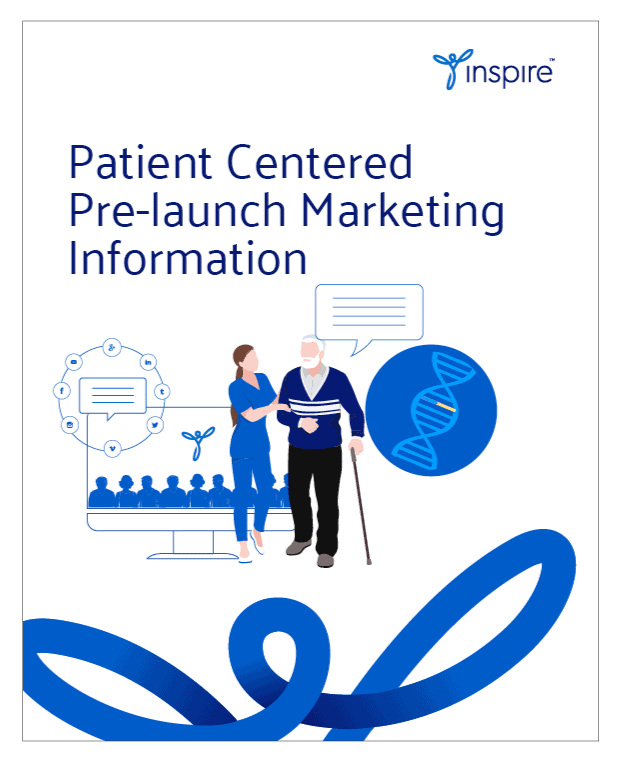Familial Amyloidosis: “So Rare You’ll Never See Anyone With It”

By Kathleen Hoffman, PhD, MSPH
Until recently, the only treatments for a rare disease called familial amyloidosis were symptom management or a liver transplant. Not only is the disease inherited, genetic, and rare, its incidence varies widely by region: The NIH says it occurs in about 1 in 583 people in some parts of Portugal, compared to about 1 in 100,000 people in the US. Inspire members say that the path to diagnosis and treatment is long and convoluted:
I was diagnosed with familial TTR Amyloidosis about a year ago after many many misdiagnosis’s. Because it hits several organs, each doctor looks at just that organ and none realize it’s systemic. Making it worse is most doctors don’t know anything about Amyloidosis. One related it to me this way “In med school they mentioned it, then said but now you can forget about it because it’s so rare you’ll never run into anyone that has it.”
There are many different causes of amyloidosis, all of which result in the body creating a mutated protein called an amyloid. In the case of the most common inherited form, hATTR, the liver is creating a mutated protein from birth. Eventually, amyloid deposits form in tissues throughout the body. Damage is progressive. If you’re from an area where the disease is more common, you might be diagnosed in your 30’s or 40’s; but if you’re not, the disease often remains undiagnosed until you’re over 60, when multiple organ systems are compromised, most often the heart, kidneys, nervous system, and eyes.,
Adding to the difficulty, manifestations range in severity and have symptoms in common with other conditions.
Don’t need assistance walking, but have pain and some numbness in arms, hands, legs, and feet. Taking [medication] for the pain. Take it from me, you will need to take something for the pain… I’m having as much problems with my heart (dizzy, almost passing out) and digestive system (diarreha) as the other.
Sometimes those impacted recognize that they have seen the symptoms before, in relatives who likely had the disease but remained undiagnosed:
I would like to talk to anybody who knows someone who has familial amyloidosis polyneuropathy. I have lost an aunt and a 46 year old nephew. My father and grandfather both died at age 59, but didn’t know from what.
My best friend has [familial amyloidosis]… Her mother/sister/cousins all unknowingly had it and were not as lucky …. her children will be tested when they are older.
Fortunately, advances in genetic testing have resulted in increased awareness of the disease in the medical community. Several potential therapies are in clinical trials, including TRR stabilizers and gene-silencing therapies.
The earlier the disease is detected, the more damage can be prevented. The authors of a recent paper on improving patient treatment for hATTR advised that for “patients presenting peripheral neuropathy of otherwise undetermined aetiology, early search for associated clinical features, especially for cardiac involvement, can help reveal amyloidosis.” In Europe, biopsy of the salivary gland is being used to look for evidence of amyloidosis when there is unexplained axonal neuropathy.
Inspire members are alerting each other to clinical trials and treatment centers:
Luckily I found a trial for my husband [name] at John Hopkins. It will be over by next January so we are hoping they will continue the medicine depending on [company name] continuing this for a future medicine. It is suppose to stabilize the progression which is happening. Now if we could only find something that will destroy that amyloid that is already in the organs…. We need more people to get the word out about this disease.
Inspire members are “getting the word out” to each other. Given the presumed rarity of the disease, there are remarkably over 3700 posts on familial amyloidosis across 20 communities, with an additional 2400 separate searches conducted on the topic. With Inspire, there are ample research opportunities for learning about the lived experiences of people with this rare disease and its complex treatment.
Inspire offers a trusted community to patients and caregivers. Our goal with this blog, this website and our content is to provide the life science industry access to the true, authentic patient voice. In so doing, we support faithful operationalization of patient-centricity. Take a look at our case studies, eBooks and news outlet coverage.
References:
1 https://rarediseases.info.nih.gov/diseases/656/familial-transthyretin-amyloidosis
2 https://www.mayoclinic.org/diseases-conditions/amyloidosis/symptoms-causes/syc-20353178
3 https://www.ncbi.nlm.nih.gov/pmc/articles/PMC7041433/
4 https://medlineplus.gov/ency/article/000368.htm
5 https://www.researchgate.net/publication/291517501_TTR_kinetic_stabilizers_and_TTR_gene_silencing_a_new_era_in_therapy_for_Familial_Amyloidotic_Polyneuropathies






